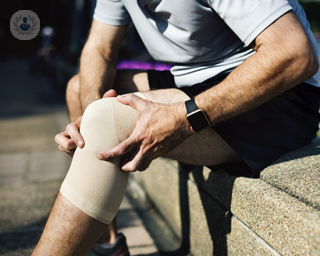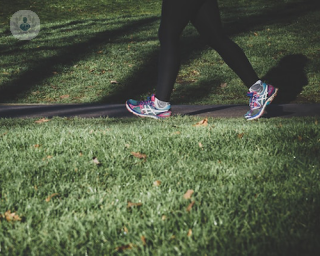Knock knees
Mr Mark Dunbar - Orthopaedic surgery
Created on: 11-13-2012
Updated on: 04-24-2023
Edited by: Aoife Maguire
What are 'knock knees'?
Genu valgum, which is commonly known as knock knees, is a condition in which the knees are misaligned and there is a large gap between the feet and ankles. It is sometimes referred to as X knees or scissor knees due to the knees being very close together and the ankles very far apart.
There are some normal changes (physiological changes) during growth, and different things can affect limbs, changing their shape. This is due to the supporting joint structures still developing. At around 8 years old, the final lower limb alignment is reached and the genu valgum corrects itself. If there is an issue after this, surgery will be resorted to.

What is the treatment?
Treatment for valgus knee correction aims to:
- Employ ligamentous techniques in which limbs are lengthened or shortened.
- Strengthen or stretch affected muscles.
- Improve posture and meniscus loads.
- Improve aesthetics, symmetry, or the locomotor system.
- Prevent potential scoliosis or spinal deformities.
- Increase standing resistance.
- Lessen meniscus and joint loads.
- Minimise risk of injury.
- Help the patient to walk differently as well as other functional movements that the joints use while being treated.
What does it involve?
Treatment includes a variety of options, from lifestyle changes to anti-inflammatory medications, as well as exercise programmes, and physical therapy. In more complex cases, surgery may be resorted to. There is no consensus on what is the most appropriate treatment for genu valgum correction. Some surgeons prefer to focus on patella treatment, which focuses on arthroscopic technique or open realignment. If the valgus and limb misalignment are noticeable, a corrective osteotomy may be recommended.
How to prepare for it
There are no specific recommendations to follow before treating genu valgum.
Post-treatment care
The patient should stretch the joints treated during treatment to avoid muscle injuries or tears.











